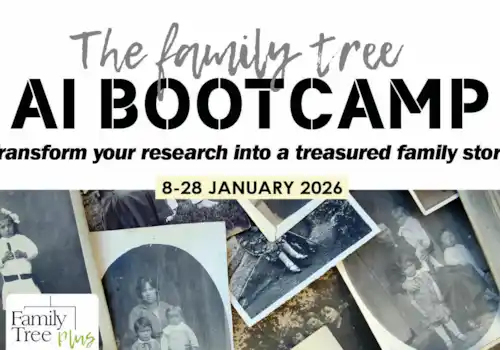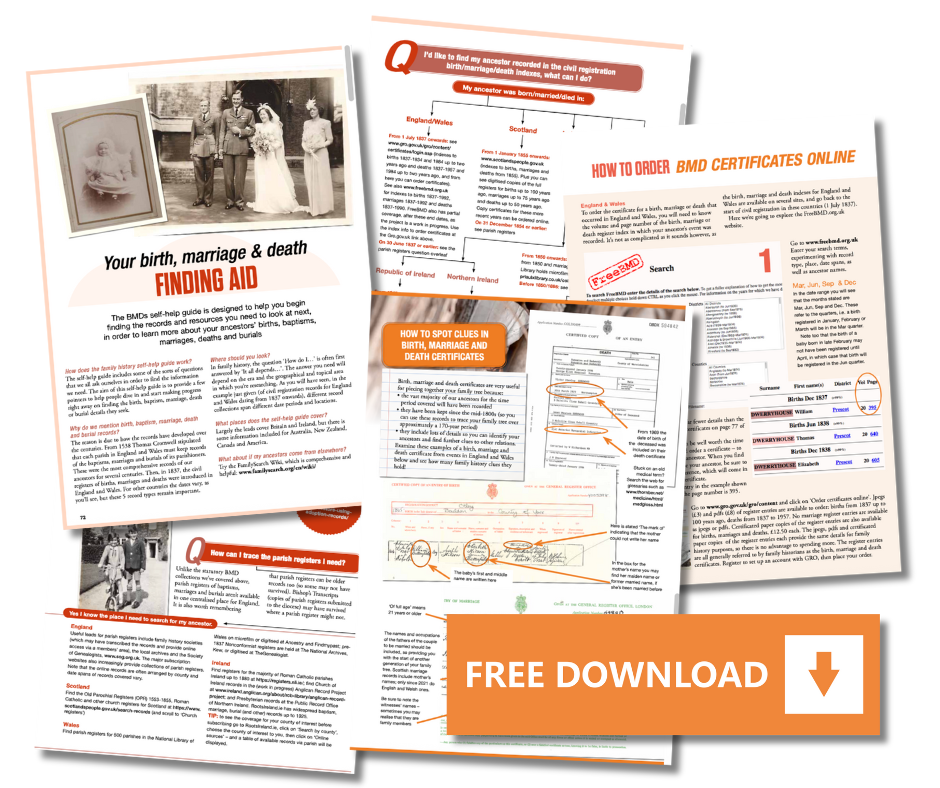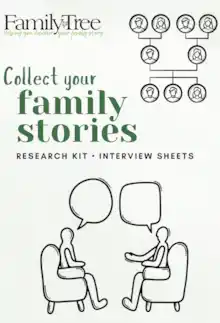Discover much more about using death records for family tree research, and how these key resources can help you find your ancestors, with our in-depth guide.
Birth, marriage and death (BMD) records are one of the key building blocks of family history and will help you to identify major events in your ancestor’s life.
By obtaining certificates from the General Register Office (GRO) for these three key events, you’ll obtain important dates and facts about your ancestor and can take your family tree back another generation by discovering other family members, as we show you here, an exploration of birth, marriage and death records.
Death records - quick links
A quick introduction to death certificates and records
Civil registration of deaths in England and Wales began on 1 July 1837, replacing the Church of England’s records of burials as the primary legal record.
For Scotland the start date was 1 January 1855, and for Ireland 1 January 1864.
It’s fair to say that, as a genealogical source, death certificates fall far short of what we might expect from documents recording one of the three main events in our ancestors’ lives.
In fact, some family historians consider death certificates to be of so little use that they rarely, if ever, go to the trouble and expense of obtaining copies of them.
Most researchers, however, like to ‘kill off their ancestors’, mapping their whole lives from cradle to grave.
In the old days, when the only way to do this was to carry out a physical search through the General Register Office’s (GRO) index books, this could be a time-consuming and exhausting process.
Nowadays, unless the name is particularly common, it’s usually possible to find our ancestors’ deaths quite easily, using an online database such as FreeBMD. This will give you the index details - as explained above - and to obtain the full details you'll need to order a certificate (for England and Wales) or view the digitised register entry (for Scotland and Ireland).
Initially, the GRO indexes recorded just the name of the deceased and the registration district in which the death occurred.
From 1866, the age of the deceased (in years) was added to the index (making identification of individuals much easier) and in that year only, middle names were replaced by initials.
In the September quarter of 1910 middle names were dropped again in favour of initials, but there were no further changes until the June quarter of 1969, when the deceased’s date of birth started to be shown instead of their age at death (see below).
Watch the 60-second video guide to death certificates
Helen from Family Tree gives us a quick guide to death certificates and why you shouldn't always ignore them…
"The temptation is often just to use marriage and birth certificates, because they’re the ones that help build the generations of our family trees. But death certificates are important too.
"Take this example: not only do we have the person’s full name, but also their date and place of birth, their former occupation, the name of the informant (which can be really interesting), and the cause of death. That last detail can sometimes point to inherited family health problems, so it’s always worth noting.
"Death certificates also give you a clear end point in a person’s life. They provide a neat “package” for your records and ensure you don’t accidentally continue researching someone who has already died. They help keep your research organised.
"So I’m a big advocate — do look up death certificates and make sure you order them if you want a really solid family tree."
Details on death certificates
The following information was recorded on death certificates in England and Wales between 1 July 1837 and 31 March 1969:
- When and where died
- Name and surname
- Sex
- Age
- Occupation
- Cause of death
- Signature, description and residence of informant
- When registered.
It’s important to bear in mind that the information recorded on a death certificate is only as reliable as the knowledge of the person supplying it.
Ages can often be no more than an intelligent guess and there is a demonstrable tendency to give ages in round numbers, i.e. 80 rather than 79 or 81, if uncertain.
The cheapest website to buy a copy of an English or Welsh marriage from is the official government website. See below for details for Scotland and Ireland.
Who registered the death?
Don’t ignore the information about the informant. This was often a relative, although the relationship isn’t always stated. In the case of an adult male, this could be the only useful genealogical detail recorded on the certificate. Even if the informant turns out to have been a neighbour, their identity could provide a vital clue.
Improved format
From 1 April 1969, the form of the death certificate was changed with the addition of the date and place of birth of the deceased and, for married or widowed women, the maiden surname.
These details are genealogical gold dust and serve to highlight the dearth of useful information on earlier death certificates. The date of birth is of particular interest to us now that the 1939 National Register is available, as we can use the details to find matches in the records.
Wills, probate & burials
Death records have obvious links to records of burials and wills. The entries in the National Probate calendars record a substantial amount of detail about the individuals concerned, although this varies significantly over the years.
The calendars (from 1858 right up until 1967) record so much information that, for family history purposes, they can virtually be used to replace a death certificate. The person’s full name, residence, date and place of death and the names of their executors or administrators are recorded; it’s just the age, cause of death and information about the informant that are missing.
However, not everyone left a will; to put it in perspective, 528,624 deaths were registered in England and Wales in the year 1880, but the probate calendars record the wills and administrations of just 42,608 people who died that year, representing only 8 per cent of the total number of deaths, and this figure includes a significant number of people who died in other parts of the UK or overseas.
For many researchers, tracing a record of a burial is as important as finding the death certificate, particularly if it can lead to the discovery of a gravestone. Records of burials and monumental inscriptions can also be used as a tool to identify death records.
Scottish death certificates
Unlike their English and Welsh equivalents, Scottish death certificates represent a significant genealogical source.
The names of both parents (including the mother’s maiden surname) are recorded as standard, although it’s worth considering the reliability of this information.
In 1855, the first year of civil registration in Scotland, additional information was recorded including the deceased’s birthplace, the names and years of birth of their children, the years of death of any children who had predeceased them and their place of burial. These were all dropped in 1856, with the exception of the place of burial, which survived until 1860.
For more information visit www.scotlandspeople.gov.uk.
Irish death certificates
Irish death certificates are identical to the standard English and Welsh format with the addition of a column to record the individual’s ‘condition’; ie their marital status. For the Republic of Ireland order certificates from www.groireland.ie and for Northern Ireland go to www.nidirect.gov.uk/gro.
How to obtain a copy of a death certificate
The quickest way to obtain a birth, marriage or death certificate is to find out the GRO reference before placing your order.
This shows the year the event was recorded (not necessarily the year it took place), the quarter of the year in which it was recorded, the district of registration, and the volume and page number.
You can search the GRO indexes for free online at Freebmd and on commercial websites including Ancestry and FindMyPast, which charge for the information.
Six large libraries (in Birmingham, Bridgend, Manchester, Newcastle, Plymouth and The British Library) plus the City of Westminster Archives Centre, offer free of charge access to the GRO indexes on microfiche, whilst a list of organisations which hold full or regional index microfiches can be found on the GRO website.
Once you’ve found the reference, visit the GRO website to order the certificate.
Scottish and Irish birth, marriage and death records
Civil registration of births, marriages and deaths in Scotland began from 1 January 1855 and you can obtain records from the ScotlandsPeople website.
BMD registration in Ireland dates to 1 January 1864, with certificates available from GRO Ireland and GRO Northern Ireland.
Claim your free BMD guide
Sign up to receive the Family Tree newsletter and we'll send you our free 'Birth Marriage and Death Guide' featuring:
- Your handy BMD finding aid (including finding records in the United Kingdom, Ireland, Australia, Canada, New Zealand, the USA)
- How to find clues on BMD records
- Your in-depth guide to ordering BMD records
You'll also receive our friendly, fun, and informative weekly email packed with expert tips, advice and special offers.
Sign up now








